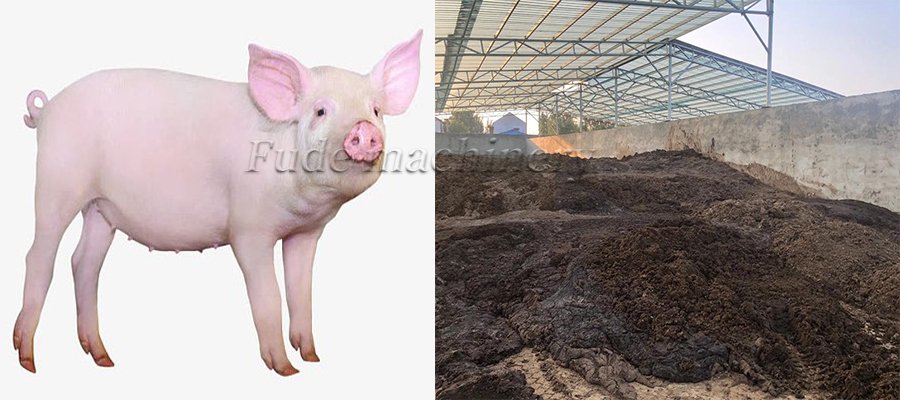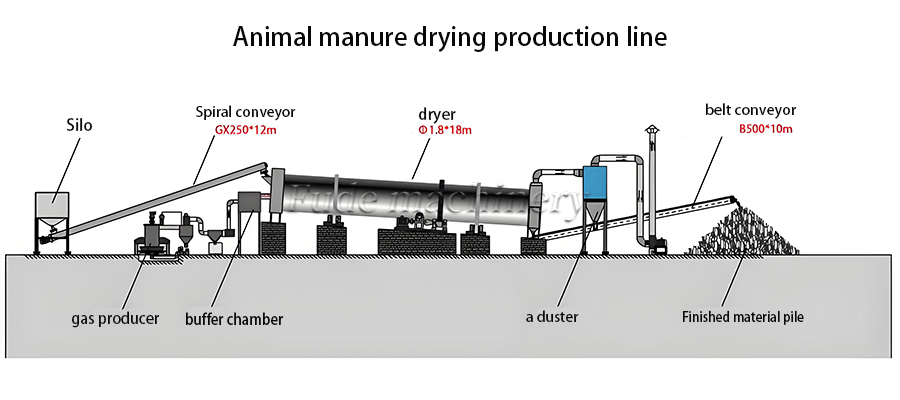Efficient Disc Pelletizer for sale at the warehouse!
211Organic fertilizer production line is a vital component in modern agriculture, which helps to achieve sustainable agricultural production.
View detailsSearch the whole station
Optimizing the pig manure drying process is crucial for industries dealing with high moisture organic wastes. Efficient water reduction not only improves the quality of the final product but also enhances environmental sustainability. Understanding the best practices and equipment involved can lead to significant benefits across various sectors that rely on organic fertilizers and composting materials.
High moisture organic wastes, such as swine dung, food waste, and agricultural residues, often contain moisture content exceeding 90%. These materials present significant challenges in waste management due to their high water content, which increases transportation costs and hinders further processing. Excessive moisture promotes the growth of pathogens and leads to unpleasant odors, posing environmental and health risks. Effectively reducing the moisture content is essential to transform these wastes into valuable resources while mitigating negative impacts.

Various industries can reap substantial benefits from efficient pig manure dehydration processes. In the composting industry, reducing the moisture content accelerates decomposition, resulting in high-quality compost with enhanced nutrient availability. Fertilizer manufacturers can produce granules or pellets with consistent size and nutrient composition, improving product marketability and application efficiency. Biomass energy producers can utilize dehydrated swine manure as a renewable energy source, contributing to sustainable energy solutions and reducing reliance on fossil fuels. Livestock farms also benefit by managing waste more effectively, reducing environmental pollution, and potentially generating additional revenue streams.
Implementing the right machinery is crucial for maximizing efficiency in the pig manure drying process. A comprehensive system typically involves four stages: dewatering, composting, granulating, and drying. The dewatering machine mechanically removes excess water, significantly reducing the moisture content and volume of the material. Composting equipment facilitates aerobic decomposition, transforming organic waste into stable compost while further reducing moisture. Wet granulators convert the compost into uniform particles or pellets, enhancing ease of handling, storage, and application. Finally, the dryer reduces the moisture content to below 10%, ensuring the stability and longevity of the final product. Each piece of equipment is designed to work synergistically, streamlining the production process and optimizing efficiency.

solid-liquid separation
Grinding and mixing of raw materials
Fermentation Pretreatment
Optimization of pig manure drying can bring significant comprehensive benefits: through technological upgrading, the water content will be reduced from 80% to less than 15%, so that the volume of manure will be reduced by more than 70%, which will greatly reduce the cost of transportation and storage; after drying, pig manure can be processed into high value-added organic fertilizers (the market selling price is increased by 3-4 times), and the nutrient utilization rate will be increased by 60% compared with the original manure, which will guarantee the ecological safety of the soil; in addition, the supporting waste heat recovery technology can reduce the energy consumption by 35%-45%. In addition, supporting waste heat recovery technology can reduce energy consumption by 35%-45%, and if combined with biogas power generation to achieve cogeneration, the cost per ton of treatment can be reduced by 50%-60%, forming a green industry chain of “pollution reduction – value-added resources – energy cycle”, which not only solves the problem of waste treatment in farming, but also promotes the development of agricultural industry. This will form a green industrial chain of “pollution reduction-value-added resources-energy circulation”, which not only solves the problem of farm waste treatment, but also promotes the realization of the goal of agricultural carbon neutrality.

Selecting the appropriate technology for pig manure drying involves considering factors such as processing capacity, energy consumption, and desired end-product characteristics. Assessing the scale of operations and specific industry needs is essential. For instance, small-scale farms may prioritize cost-effective solutions with lower energy requirements, while large-scale fertilizer producers may focus on high-capacity systems with advanced automation features. Evaluating the technical specifications, durability, and after-sales support of the equipment can also influence the decision-making process.
Through the above optimization measures, the efficiency of pig manure drying process can be improved by more than 50% and energy consumption can be reduced by more than 30%, and at the same time, the win-win situation of environmental protection and economic benefits can be realized.
Organic fertilizer production line is a vital component in modern agriculture, which helps to achieve sustainable agricultural production.
View detailsPotassium chloride serves as a crucial nutrient source in the agricultural sector, enhancing plant growth and crop yield.
View detailsIn farms, livestock and poultry manure can be mixed with other organic materials to form pellets, turning waste into treasure.
View detailsWith accelerating urbanization and population growth, the amount of sludge produced in wastewater treatment plants continues to increase.
View details